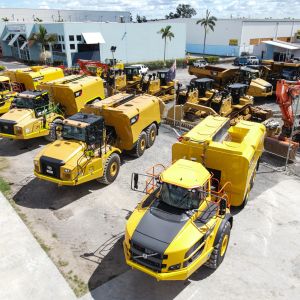I’ve made plenty of mistakes in my life, some that I still kick myself for. One of my biggest regrets is something I didn’t do, rather than something I did do: invest in cryptocurrency. However, as this spectacular story about the meteoric rise to become the world’s third largest crypto exchange and then even more rapid collapse of FTX tells, over time investments will revert to their true value.
Cryptocurrency (Bitcoin) first came out in July 2009 and first traded at $0.0008. I didn’t understand crypto but could see it had potential, especially in a world of growing digital trade. As Crypto supporters are quick to point out, cash is basically only worth the paper it’s printed on anyway. The difference is that cash has hundreds of years of acceptance as a trading currency and is supported by Governments as the official trading mechanisms, including being the foundation of tax regimes.
When Bitcoin was valued at about $100, instead of taking the plunge, I followed Warren Buffets advice: “Invest only in what you know and understand”, which together with his Golden Rule to “Never lose money” meant I didn’t even take a punt on something that 10 years later was trading at a peak of $67,566. Lesson learned, trust my gut sometimes.
From nothing, FTX was established in 2019 by the now 30-year-old Sam Bankman-Fried to eventually become valued at $USD32 billion before it collapsed in the space of 1 week at the start of November. The best way to understand FTX is to view it as a trading platform for crypto much like how for instance the ASX facilitates share trading. FTX was transacting $USD9.4 billion worth of trades per day. There are stark differences though in that there are no laws to regulate crypto organisations, and they don’t have custody requirements (that is, an obligation to keep safe any monies paid to them). 25% of Australian’s have exposure to crypto, and in defence of those who invested in FTX Australia, this was one of few exchanges that actually had an ASIC financial services license.
So how did this black hole implosion occur? FTX invented its own digital currency: FTT. FTX had a related company called Alameda Research which was a combination of a funder lending money to leverage investors on the platform, as well as functioned as a market maker (something that is illegal in the share trading world). In other words, it traded its own tokens (that had no underlying supporting asset) on behalf of its customers with itself to inflate the value of FTT.
On 2nd of November, news website Coindesk published a damning story that highlighted that nearly all of Alameda and FTX assets were in their own created FTT currency. FTX’s largest competitor and the world’s largest trading platform Binance read the report, and on 7/11 decided to cash out the $500 million of FTT that they held. As there was very limited cash or liquid assets in FTX, basically a “bank run” ensued whereby investors wanted to cash out at rapidly declining values. As Binance were themselves exposed to FTX collapsing, Binance announced on 8/11 that they would purchase FTX (the trading company) to avert the crisis. Due diligence took only a day, because on 9/11 Binance pulled out of the deal citing mishandling of customer funds due to the commingling of money with Alameda. FTX needed $8 billion to cover the gap between what it owed and what it could pay out.FTX had to appoint John Ray (who navigated Enron out of its disaster) to sort out the mess. Ray’s assessment of the situation was “Never in my career have I seen such a complete failure of corporate controls… in the hands of a very small group of inexperienced, unsophisticated and potentially compromised individuals… and such a complete absence of trustworthy financial information as occurred here”. The reason for the failure was due to poor management that didn’t even have proper balance sheets and a very limited trail of what money the company had nor where it went. There were no traceable customer accounts of what had been paid in. Even during the final days of FTX, $400 million flowed out of FTX’s assets and it’s still unclear why and where those funds were moved (it’s speculated it went to Alameda).
The Australian arm FTX Australia was thinly capitalised, with $42 million in an Australian bank account. But the poor record keeping means there is no way of knowing who owns what, with the most likely outcome for those who traded through the Australian entity likely to see all the funds pooled for a minor payout to the creditors.
Some say Binance caused the collapse to take out a major competitor, and there’s a fair chance that was the intention, but the founder of Binance (Zhao) had been friends with Bankman-Fried. However, Binance also took a substantial hit with its losses directly in FTT as well as indirectly as the whole crypto world has experienced a huge drop in value. Binance would have been better off to quietly sell off its FTT exposure.
The true reason for the failure lies in ineptitude to run a business. Accounting processes were a mess, with even property purchases completed without keeping records of the transactions. Another contributing factor was that FTX/Alameda had grown by bailing out a couple of competitors that were broke. Paying for businesses that are losing money is seldom a good decision.
Even sophisticated investors and many major financial institutions were duped into providing millions and even billions in funding. FTX, unlike most young start-ups, was reporting a tidy profit taking a cut of the billions of dollars in crypto trades. Subsequent court investigations have already cast doubt on if the company ever made any money. It was seemingly flush with cash, offering 12% interest on deposits to Alameda (attractive when official cash interest rates were roughly zero). Bankman-Fried moved the company to the Bahamas for its crypto friendly regulatory regime, and saw himself as a big spending effective-altruist, giving multimillion dollar donations to Democrat politicians, funds to combat climate change, sponsoring Miami’s basketball arena and NBA teams as well as a Formula One racing Team.
There is more to this saucy story, and I can’t wait for the movie to come out. It’ll rival “The Wolf of Wallstreet” for sure, with Bankman-Fried having had a relationship with his self-confessed 28 year old drug using CEO, together with the many “elites” who mingled with the flamboyant founder whilst being suckered in.
As the old saying goes, if it’s too good to be true, it probably is. No doubt the FTX collapse will set back the gains made by crypto currency over the past decade as a reputable trading currency. For it to recover, there will need to be regulatory intervention that ensures that crypto exchanges need to be accountable for where the money they receive actually goes. The dizzying levels of leverage needs to also be curtailed, and the ability for insiders to help themselves to large lumps of any real assets stopped. Otherwise fools and their money will continue to be parted as companies that really have nothing as an asset and don’t produce a profit will eventually crash to their underlying value – zero.
Words from the wise
Investment advice: “Rule No 1: Never lose money. Rule No 2: Never forget rule No 1.” – Warren Buffett.
“It’s hard to soar like an eagle when you’re surrounded by turkeys”- Adam Sandler
All trends will end: “What goes up must come down” – Sir Isaac Newton
Fun useless fact: the first real world Bitcoin trade on May 22, 2010 was crypto enthusiast Laszloe Hanyecz who paid 10,000 BTC’s for two large Papa Johns pizzas. What was then worth about $41 would today be worth about $300 million, making claim to that this was the most expensive pizza ever.
As always, onwards and upwards!
Fred Carlsson
General Manager



